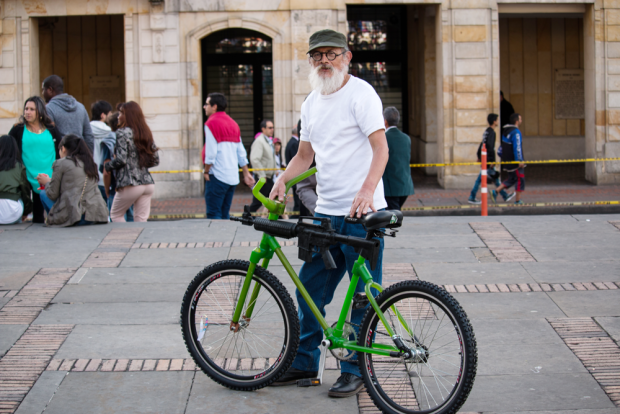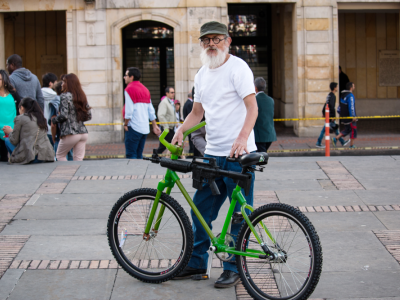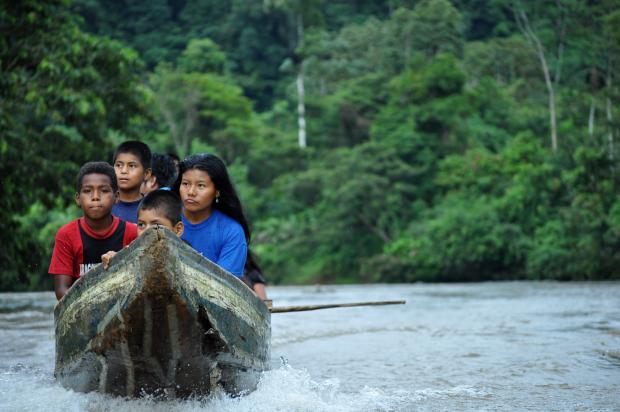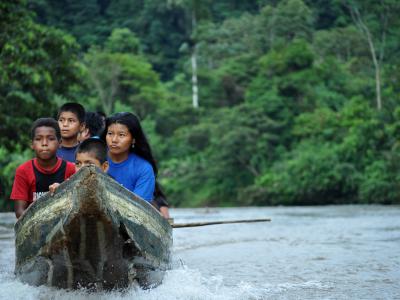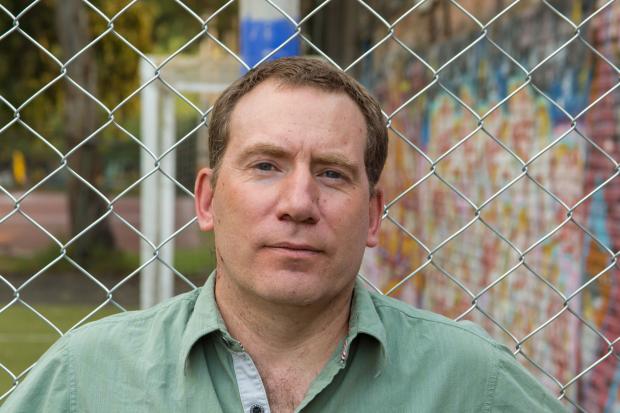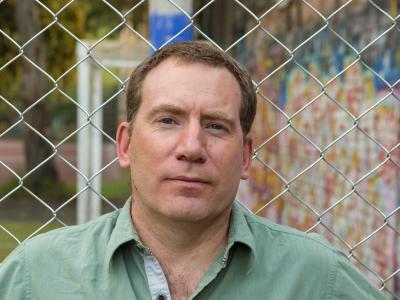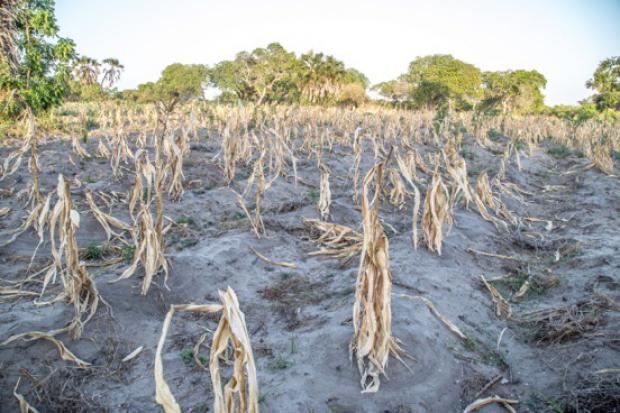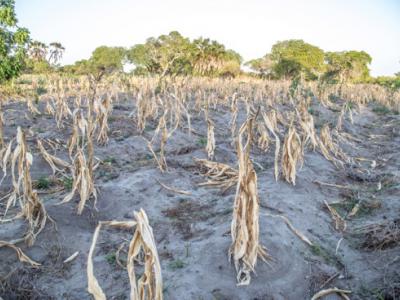How the Farc’s guerrilla fighters are preparing for civilian life
Edilburto Cadena, a middle-aged doctor, psychologist and some-time teacher of Latin America’s oldest and most notorious guerrilla army, found the fourth attempt worked a charm. After abandoning three separate pedagogical strategies, he set his students the task of drawing the various systems of the human anatomy on plywood boards.
Edilburto’s students are all members of the Revolutionary Armed Forces of Colombia, or the Farc. Teaching methods based on textbooks and lectures had fallen flat because most of the class had been illiterate peasant boys and girls the day they melted into the jungle to join the fight for Colombia’s rural dispossessed. The former fighters quickly took to the teamwork and practicality of this latest task, and before long colourful anatomical diagrams festooned the walls of the ramshackle teaching hut, next to berets and rifles.
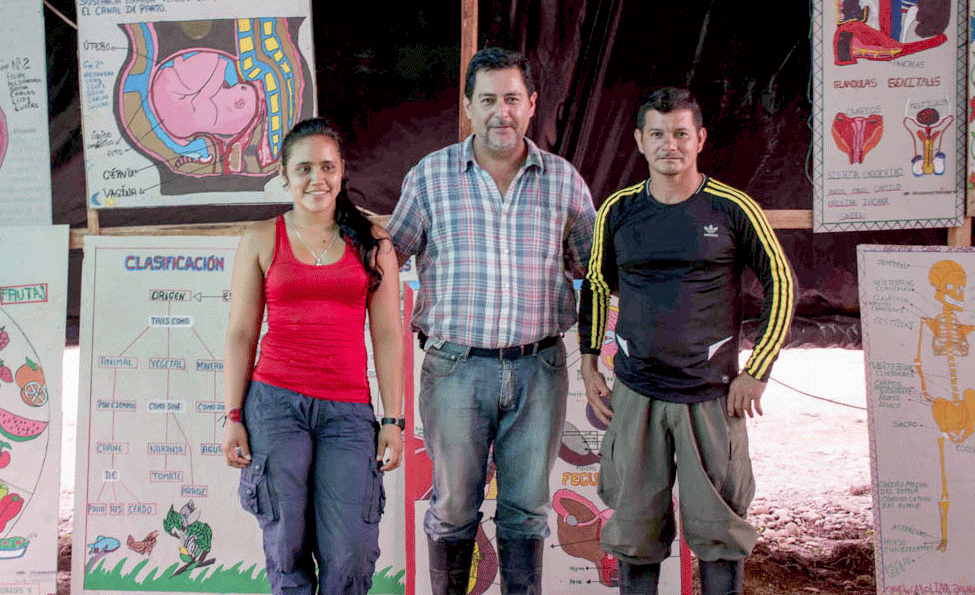
Edilburto Cadena with his students Sofía (left) and Carlos (right) in front of their anatomical drawings
These classes are part of the peace settlement between the Colombian government and the Farc. In 2016, the Farc’s leaders agreed to lay down their weapons and renounce violence in return for amnesty for the crimes of rebellion and sedition. The former rebels are obliged to make reparations to the victims of the conflict, and those accused of more serious crimes would have to stand before a tribunal and face lenient prison sentences.
The five-decade cycle of violence has killed over 220,000 and forced nearly seven million more from their homes
The deal, hammered out in Havana last year, was saved from collapse by a timely Nobel Peace Prize following rejection in a tight referendum. Not only did the deal give former combatants a way out of a five-decade cycle of violence that has killed over 220,000 and forced nearly seven million more from their homes, it also aims to equip them for a civilian world that has changed beyond recognition.
When the deal was signed, some 7,000 guerrillas marched out of hiding into 23 prearranged peace camps, known as green zones, scattered across the country. For the first time, they passed openly through rural towns, cheered by crowds able at last to imagine a country free of landmines and the sound of aircraft bringing chemicals to kill their crops, soldiers or sons. But for a small minority of dissidents, almost the entire Farc rank and file have been living in these camps, still in arms, but under the eye of UN peacekeepers and the Colombian army, as all three parties ensure the terms of the agreement are fulfilled.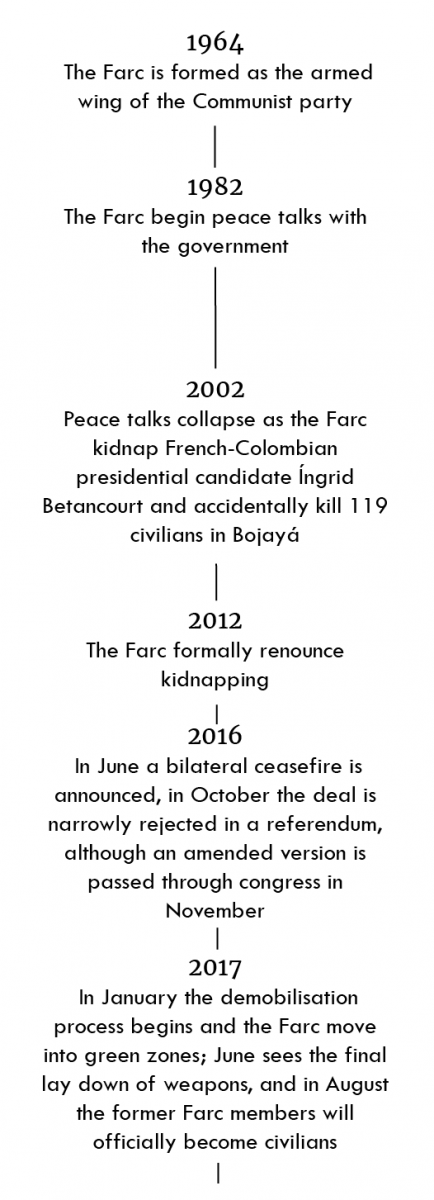
Before the bilateral ceasefire, many of Edilburto’s students had been medics in the field. What medical knowledge they possessed was highly practical, passed on from clandestine five-day training sessions with sympathetic civilian doctors. Visits to a hospital were out of the question. When I visited the camp (La Carmelita) in mid-April this year, one student, a woman in her twenties who goes by the nom de guerre Sofía, described the regular rush to patch up a bullet or shrapnel wound before amputation became a necessity.
The proceeds of extortion, kidnapping and the drug trade, the main sources of the Farc’s warchest, could only buy so many medical supplies, and the guerrilla medics had to make use of what they could find in the jungle. Another student, a man of around 30 who went by the name Carlos, recalls mixing a solution of quinine root to treat malaria. Once the peace process was underway, the guerrillas could look beyond their immediate survival. Edilburto was schooling his class in the fundamentals of anatomy, public health, hygiene and nutrition. It’s hoped this knowledge will help former combatants re-join civil society and find gainful employment after they have been granted amnesty.
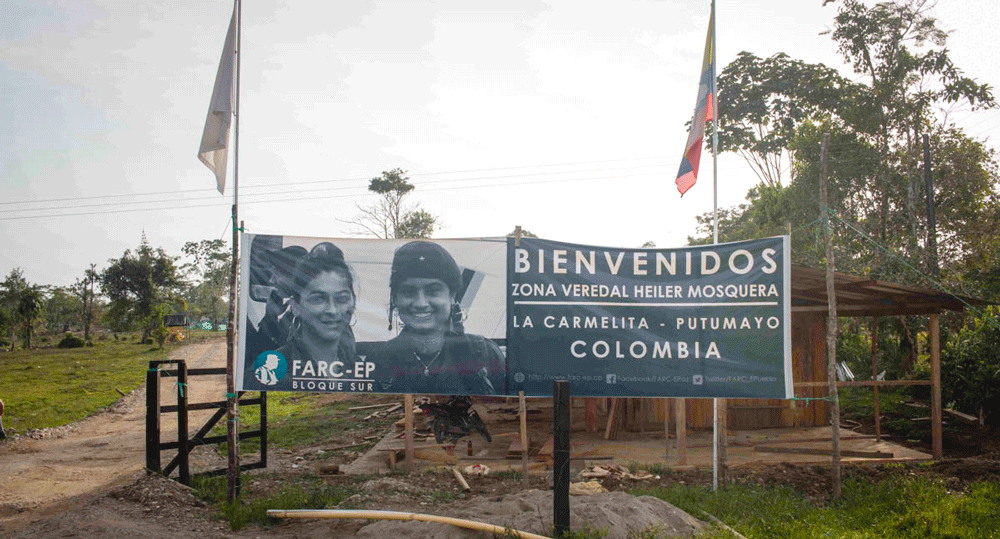
Welcome sign at the entrance to La Carmelita Green Zone, a Farc peace camp in Putumayo, Colombia
Despite the apparently permissive and communal sexual culture of the mixed-gender guerrilla army, the strains of war had meant pregnancy was discouraged or forbidden, and the Farc stand accused of forced abortions for female fighters. With the shadow of war lifting, Sofía told me about “six new guerrilleros”, all conceived as the peace talks become a reality. Although Sofía spoke of plans for a crèche in the camp, these infants played in the mud alongside pigs, chickens and a menagerie of exotic pets – a parrot, a fist-sized monkey and an otter, who has since died.
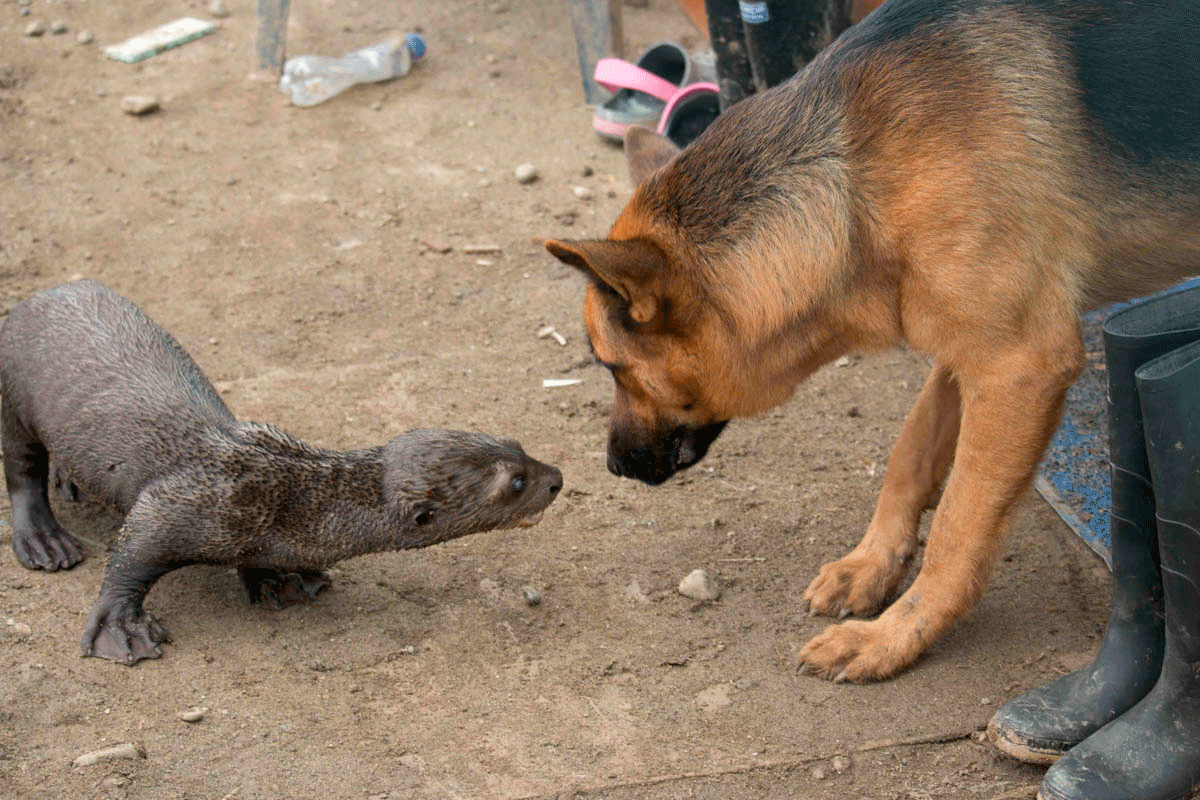
Pet otter and dog belonging to Martín Corena, commander of the Farc's Southern Bloc
Though armed guerrillas run the camp, they cannot leave the perimeter, which makes it an uneasy hybrid of rebel stronghold, peace commune and POW camp. Guerrillas who are seriously ill or in labour can be taken to the nearest hospital, an hour or two away in Puerto Asís, provided they have signed permission from a Farc commander, the Colombian army and the United Nations mediators, whose radio masts can just be seen over the lush vegetation surrounding the camp.
The peace deal had promised the Farc fit habitation, but they arrived to find a pile of basic tools and raw materials, with the message: do it yourselves. The need to build their own homes may keep the former fighters busy and give their days in the camp a sense of purpose, but it has also lead to mutterings about what other terms the government might come up short on.
It's an uneasy hybrid of rebel stronghold, peace commune and POW camp
Edilburto condemned the camp’s “deplorable” conditions, which he said were part and parcel of Colombia’s endemic corruption and inequality, where “less than a per cent of what is given reaches the people”. His students agree that this was why they had been fighting in the first place, “for equality … to transform society, its politics and economy". Edilburto’s lessons focus on hygiene and public health, and the class are making it their project to improve the situation. They have set up an infirmary, and Edilburto demonstrated how to use medical equipment without risking infection. If a camp resident has a chronic condition, such as epilepsy, the whole class learns how best to care for them.
Into their third month, when I visited, most of the guerrillas were still living in dirt-floored tarpaulin bivouacs as they set to work each day pouring concrete for a growing village of squat, grey barrack-like lodgings. Since then, I have told that most of the houses have been completed.
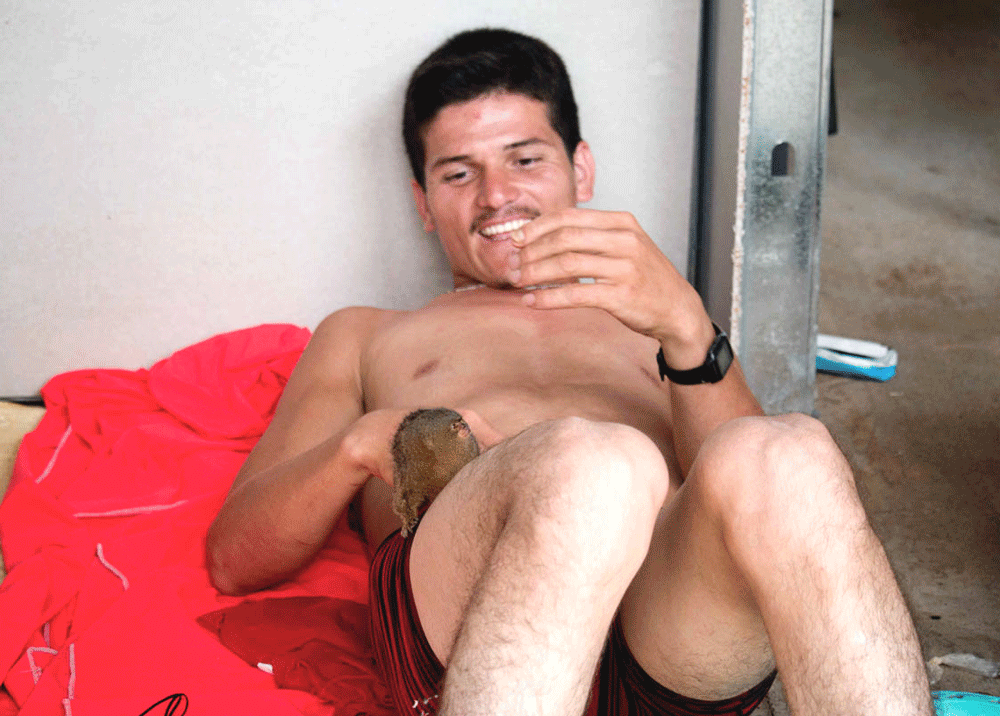
A Farc officer relaxes with his pet monkey on the concrete floor of his new family home
In line with the spirit of a socialist guerrilla army, they have no doors or any other concession to a private life. This, along with the strict sundown curfew and communal unisex bathing, is harder for the resident civilian teachers to adjust to than the squalor.
Yet many former fighters hope to stay in the camp after they have laid down their weapons. There they intend to build a permanent, peaceful community based on the Farc’s democratic socialist ideals. Leading the charge for continuity in change is the Southern Bloc’s commander, best known by his alias Martín Corena. Never without one of his genuine Stetsons, I saw him either patrolling the camp with four large dogs in train, or receiving nervous petitioners in hushed, deliberate tones inside the largest and most finished of the barracks.
Martín boasts that the discipline of his soldiers is greater than that of the army, who are able look forward to leave and retirement. The Farc is for life, and the peace will not change that. Despite the defeats that forced the Farc to the negotiating table, Martín is enthusiastic about the group’s future. He spoke of plans to transform the guerrilla army into a “strong political party” at the head of a “mass movement”, which would field “governors, mayors and congressmen”. They would trade weapons for the ballot box and “never think of war again”. He has the confidence of a man who, after four decades fighting a brutal and impossible war, expected against all odds to die in peace, surrounded by a community who respected and relied on him.
The Farc is for life and the peace will not change that
He is not alone in a desire to turn the Farc into a peaceful political project. During my visit, some of the former fighters were taking classes in social media and digital journalism, led by a pair of tech-savvy young civilian women from Bogotá. This led to some surreal images, including a guerrilla in a tarpaulin hovel chastising a pig for chewing a power cable of a Macbook Pro, and a squad of real-life revolutionaries and jungle fighters dissecting an 80s Claude van Damme action movie and a Nelson Mandela biopic. These digital skills are already being used to set up a media channel, New Colombia News, to fight for the Farc’s ideals online.
Yet others admitted to a sense of listlessness since renouncing armed struggle. They simply see little for themselves away from the only life and community they have known since childhood, especially in an outside world where many would regarded them as terrorists. Without their rifle or comrades for protection, they have reason to fear reprisals by paramilitary gangs.
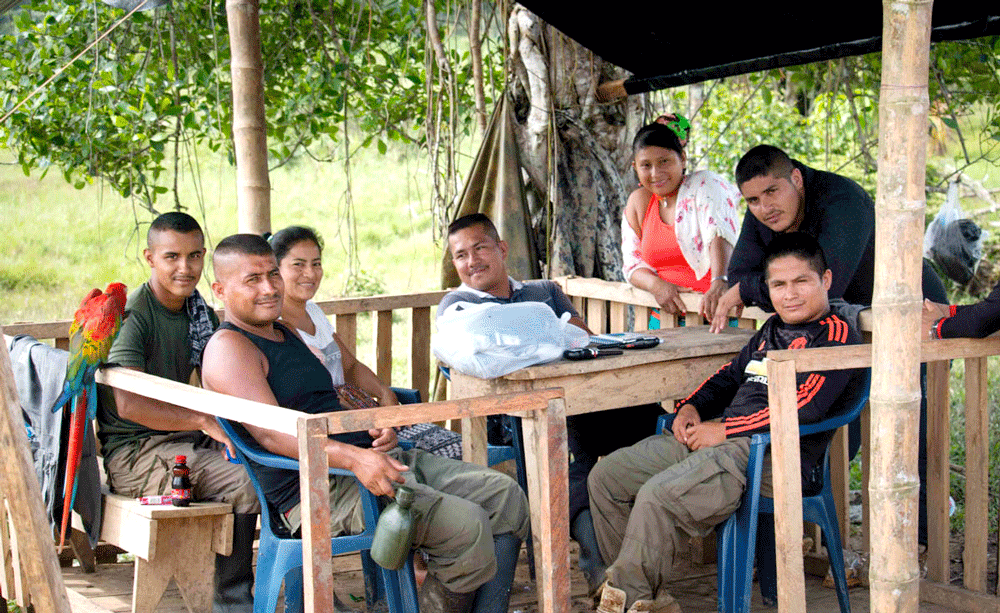
Former fighters of the Farc socialise in the shelter of a guard post
For the average guerrilla, life in the mountains and jungle had meant no contact with family or friends and no access to telecommunications or electronic media. Although Martín does his best to preserve the military discipline that kept his soldiers alive and together for so long, a black market in text messages has begun to emerge in the camp. Many guerrillas can barely wait to be reunited with their families, and the modern consumer world is starting to creep in.
A black market in text messages has emerged in the camp
In the camp, food is plentiful, whether from a government stipend or the spectacular lushness of the Putumayo – lying beyond the Andes on the verges of the Amazon rainforest by Colombia’s southern border. Peacetime paunches are becoming common among the now-sedentary rebels, who see no reason to give up the heroic carbohydrate consumption of a life lugging laden packs over mountains and through jungles. A cookery class was the first to graduate, and, a couple of months in, the guerrilla bakers are churning out as many sweet, heavy buns as their comrades can consume.
During one evening, the camp assembled for a concert by the Southern Bloc’s own Vallenato band, The Rebels of the South. The guerrillas sat in neat rows, dressed in red berets and uniform fatigues, and listened with sombre, rapt attention to accordion-backed ballads about the difficult road to peace, assault rifles and the occasional grenade launcher resting at their sides.
Many of Edilburto’s students are looking forward to a life for themselves beyond the Farc, and they hope what they have learned in the classes will get them there. Carlos spoke of a pharmacy he intends to open. Meanwhile, Sofía hopes to study medicine in Havana with a scholarship from the Cuban government, who hosted and mediated the peace talks, and return to Colombia as a qualified surgeon.
Despite a delay in the timetable, the majority of the Farc’s weapons are expected to be decommissioned by the end of June, and the demobilisation process is set to conclude on 1 August, when the guerrillas will be permitted to leave the camps.
Some 7,000 men and women who have spent their most of their lives hiding and fighting in the Colombian jungle will face the choice between trying to build a peaceful social movement together, or striking off on their own to try to build a normal life as a civilian. This will not be an easy transformation for the ex-rebels, many of whom lack formal education or experience of life outside the dirt and discipline of a jungle camp, and all of whom bear the scars of civil conflict along with the stigma of its atrocities.

